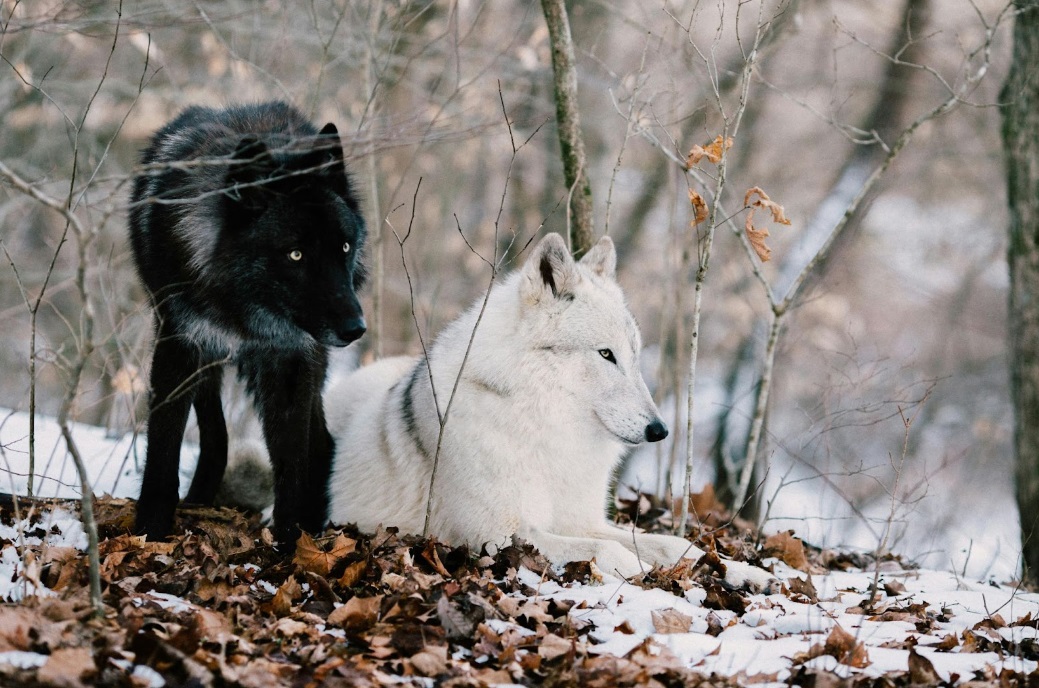The story of man and dogs is a journey that began over 15,000 years ago, in the twilight of the last Ice Age. Picture the stark, unforgiving landscapes where the first threads of an unlikely friendship were woven between human hunters and wild wolves. This story of domestication is not just about the transformation of wolves into dogs; it’s a story of survival, companionship, and the relationship that would lead to one of the most enduring partnerships in the animal kingdom.
A Timeline of Dog Domestication
Our story starts when the Ice Age still held the world in its frosty grip. Archaeological evidence suggests that the domestication of dogs from wolves occurred at least 15,000 years ago, with some studies pointing to even earlier dates. The exact timeline remains a topic of debate among scientists, but the consensus is that this transformation was gradual, spanning thousands of years.
Pre-15,000 BCE: Early humans and wolves share a landscape of necessity, competing for resources but also recognizing mutual benefits. Wolves, drawn by the carcasses left behind by human hunters, start trailing human groups, setting the stage for a cautious relationship.
Around 14,000 BCE: Archaeological sites, such as the one in Bonn-Oberkassel, Germany, provide the earliest clear evidence of domesticated dogs. Buried alongside humans, these dogs show physical changes from their wild counterparts, hinting at a shared life.
9,000-10,000 BCE: As humans transitioned to agricultural societies, the roles of dogs diversified. They started to guard, herd, and continue as companions, showing an increased bond and reliance on one another.
Genetic Insights into the Bond
The leap from wild wolf to domestic dog was monumental, involving significant behavioural and physical changes. Recent genetic studies have illuminated this path, revealing the extent of selective pressures exerted by the needs of human societies.
Selective Pressure
Early humans did not set out to create the dog deliberately. Instead, the process was natural at first, with wolves gradually adapting to human environments. Over time, humans began to selectively breed individuals that exhibited desirable traits, such as tameness, loyalty, or specific physical attributes. This selective pressure accelerated the divergence from their wolf ancestors.
Genes Linked to Domestication
Researchers have identified specific gene regions associated with behaviours and traits that differentiate dogs from wolves. These include genes related to tameness, social behaviour, and cognitive abilities. For instance, changes in genes regulating the development of the nervous system and the production of certain hormones like oxytocin and vasopressin likely made dogs more sociable and better at interpreting human gestures and commands.
Adaptations to Human Diet
Another fascinating aspect is the genetic adaptation of dogs to a human-associated diet. As humans transitioned from hunter-gatherer lifestyles to agricultural societies, dogs adapted to digest starches more efficiently, mirroring the dietary changes in humans. Genes involved in starch digestion, such as AMY2B, have been found to be present in higher copy numbers in dogs than in wolves, indicating a shared evolutionary adaptation to agricultural life.
Dogs in Culture and Society
Throughout history, dogs have played a myriad of roles in human societies. From the hunting partners of nomadic tribes to the revered and sometimes deified companions of ancient civilizations, dogs have been protectors, workers, and family. Artefacts from ancient Egypt, Mesopotamia, and Rome depict dogs in roles of prominence and respect, illustrating their integral presence in human life.
The roles of dogs expanded with the development of different human societies, adapting to the needs of pastoralists, farmers, and city dwellers alike. Their versatility in performing tasks such as herding, guarding, and even participating in warfare underscores the adaptability and intelligence that endeared them to humans.
Adaptation and Change: The Impact on Dogs
Domestication has left its mark on dogs, both physically and behaviorally. From the diminutive Chihuahua to the towering Dobermann, selective breeding has produced a dazzling variety of breeds, each suited to specific tasks or aesthetic preferences. Behaviorally, dogs have developed an unparalleled ability to understand human cues, a trait not found in their wild ancestors. This mutual understanding is foundational to the dog-human bond, a connection that transcends mere companionship to embody a deep, interspecies communication.
This behavioural adaptation is a key component of dogs’ ability to integrate into human societies. It has enabled dogs to perform roles that require close cooperation with humans, such as herding, search and rescue, and therapy work. Physically, domestication has led to a diversification of traits, ranging from size and coat colour to ear shape and tail type, demonstrating the extent of human influence on canine evolution.
Conclusion
This journey from wild wolves to beloved members of the human family underscores the complexity and depth of the human-animal bond. It is a relationship that has evolved over millennia, shaped by the needs and pressures of survival, but also by a profound emotional connection that transcends species boundaries.
The enduring partnership between humans and dogs is a testament to the capacity for interspecies cooperation and the shared benefits that such relationships can bring. As we look to the future, the ongoing study of this unique bond promises not only to deepen our understanding of domestication but also to illuminate the possibilities for coexistence in an ever-changing world.



